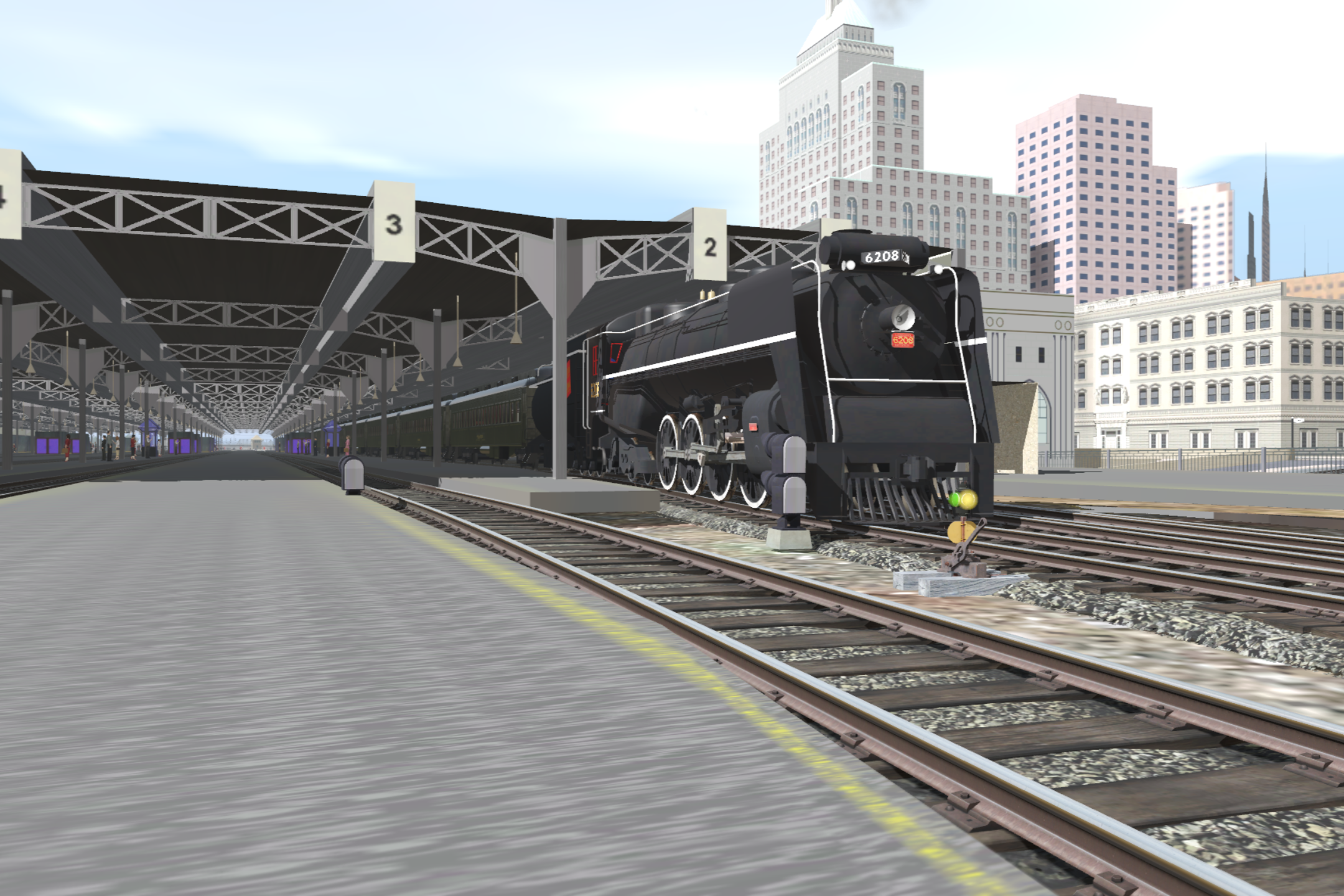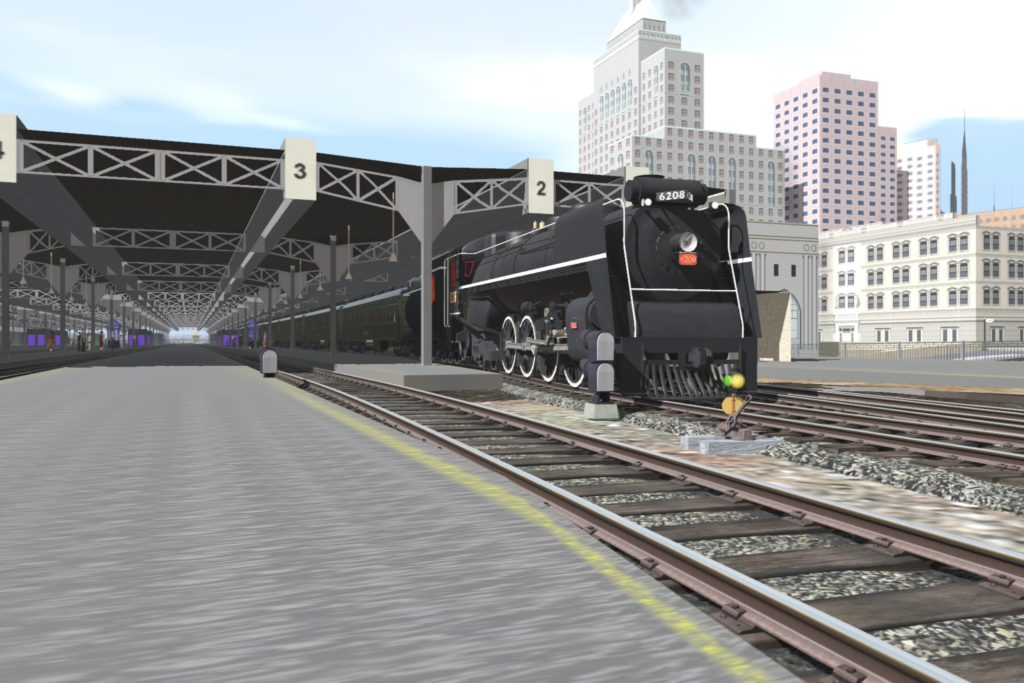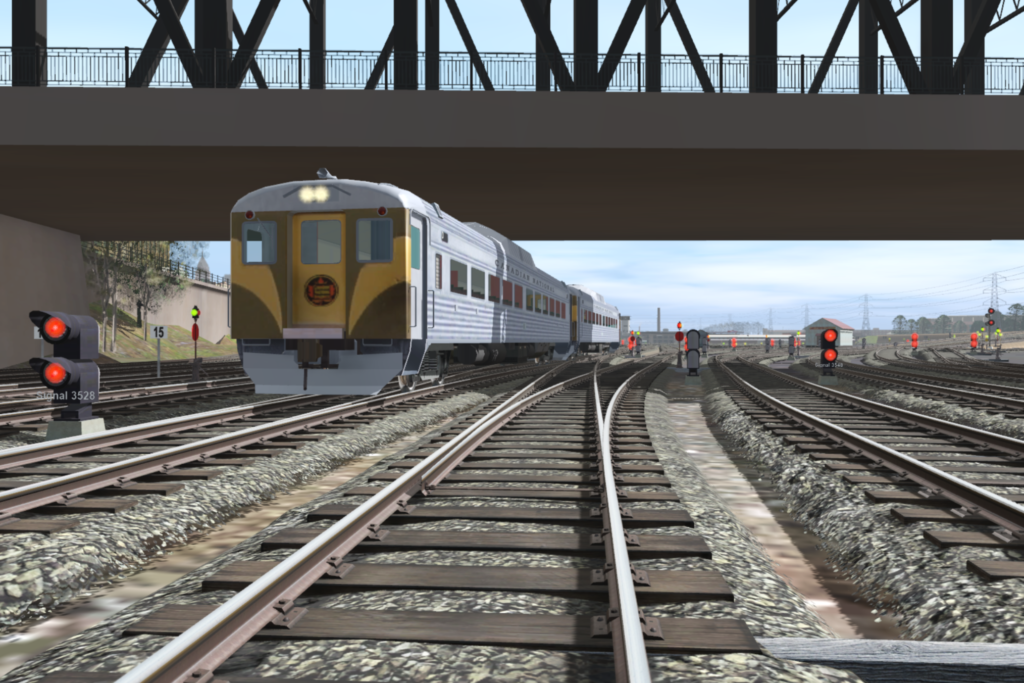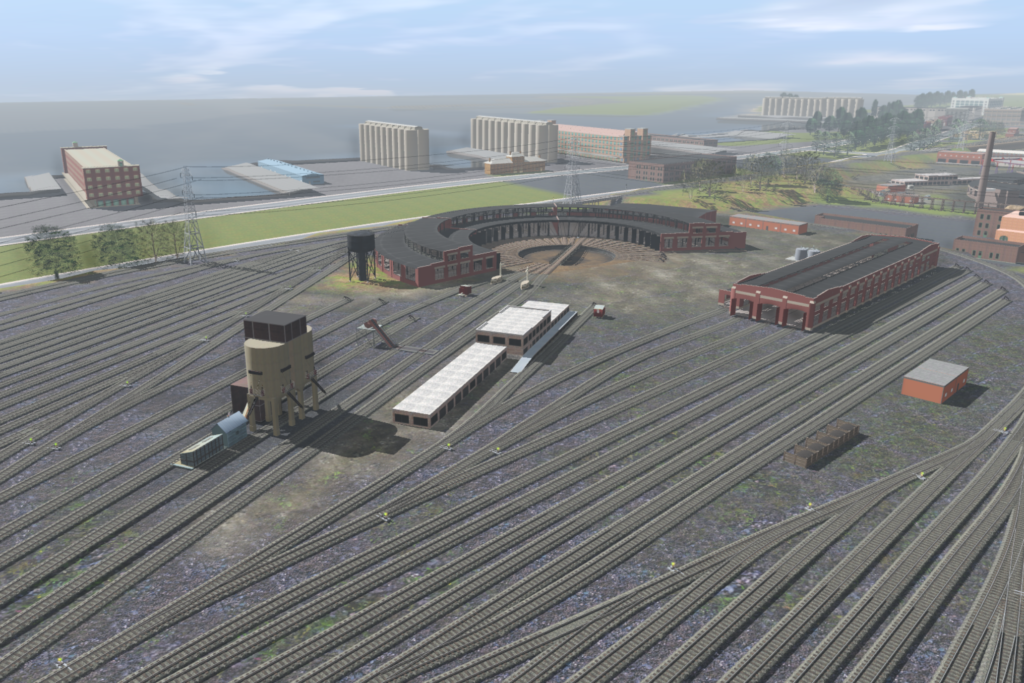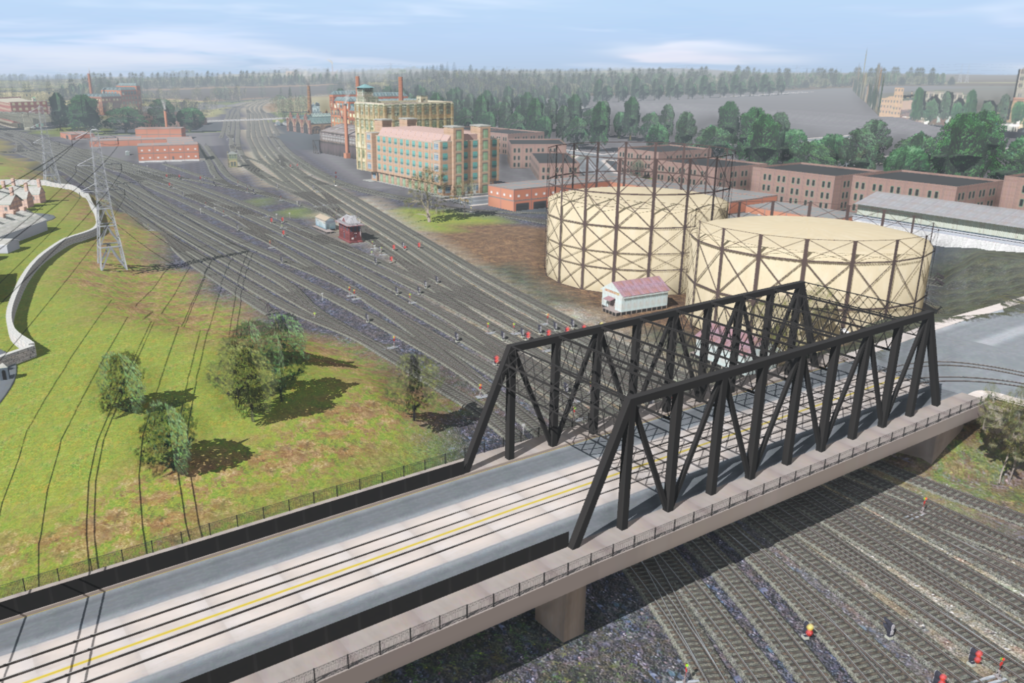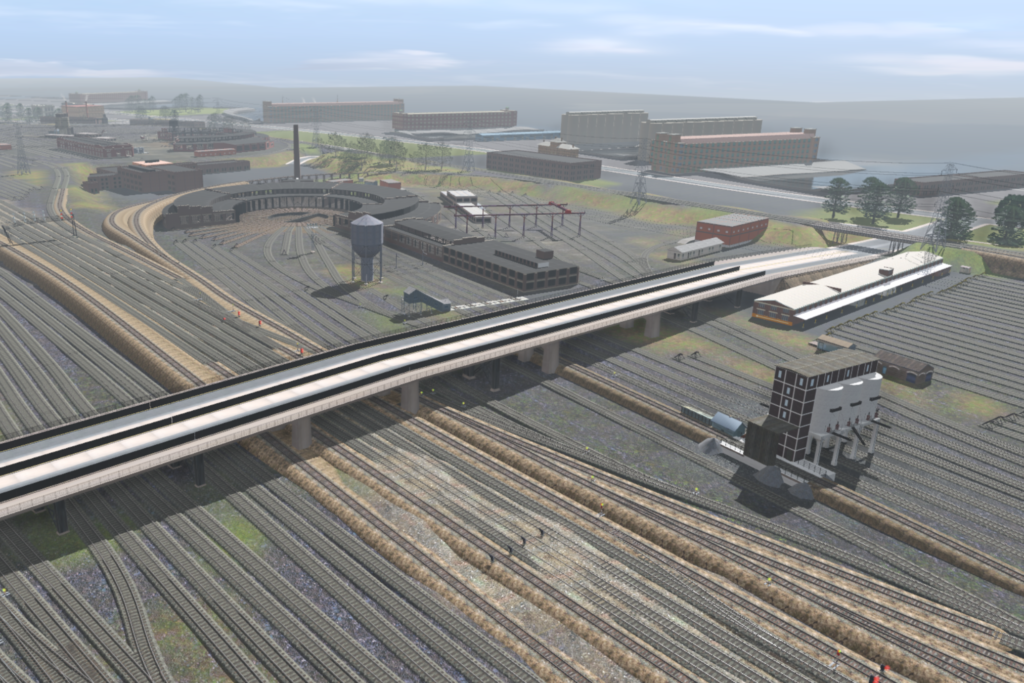Incorporating new forms of technology to bring railway history to life has been a guiding principle of the Toronto Railway Historical Association since it was founded. While our organization’s nature requires us to look to the past often, it is important that we look to current and future technological trends to ensure that our museum mandate is acted upon in the most compelling and entertaining way. Commercially-available train simulation has existed in some form since the 1980’s. However, the first simulators to see any substantial sales in North America were Microsoft Train Simulator and Trainz, both of which were released in 2001. The Toronto Railway Historical Association was formed the same year, and we soon began searching for ways to take advantage of these simulators. Our volunteers took to Trainz’s built-in Surveyor tool to recreate the Toronto Rail Lands as they would have looked during the year 1954. This required numerous custom assets built from the ground up, such as 3D digital models of Union Station and the Royal York Hotel. It also involved the digital re-creation of several structures which no longer exist, such as Canadian National’s Spadina Roundhouse, requiring both the historical reference material and technological expertise to do so. Era-appropriate locomotives and rolling stock were also included, such as the digital recreation of CN 6213 and over a dozen other similar pieces of equipment. The volunteers involved in this project were Russ Milland, Derek Boles, Martin van Kuilenburg, Jay Larkin, Tom Landers, Al Sharpe, Jon Hull, Terry Morris, Ferd Mels, and Dave Lawrence. Auran, the Australian company that developed Trainz, was impressed enough with the results that the Toronto Rail Lands 1954 route was shipped with copies of the latest iteration of Trainz at the time, Trainz Rail Simulator 2006.
The Toronto Railway Historical Association has gotten a lot of mileage out of its simulator over the past decade. Using a full-size locomotive cab and a custom control stand, we’ve offered an immersive experience using the Toronto Rail Lands simulation for visitors from the Toronto Railway Museum’s opening in 2010 to the present day. It remains one of the more popular exhibits inside of the roundhouse. However, many of the TRHA’s original plans for our simulators fell by the wayside. The Toronto Rail Lands 1954 route was intended to be only one of several digital recreations of the Union Station Rail Corridor in different eras, the others being the mid-1800’s, the 1890’s, and the modern day. Another locomotive cab that was donated to us a few years before the one we currently use for our simulator was intended for an even more advanced and immersive simulation, but these plans were also shelved.
Since Trainz Rail Simulator 2006 released, computer graphics and processing technology has vastly improved. Photorealism has already been achieved by numerous video game titles over the past decade, which has made our existing simulator look somewhat dated by comparison. It is the goal of the TRHA to revisit our simulations and to tackle the aforementioned goals with renewed vigor. Nothing is set in stone at the moment, but this will eventually require volunteers who have experience with built-in Train Simulator editors, 3D modelling, texturing, rigging, etc. If these things are of interest to you, please consider signing up to volunteer.
See Our Simulators
We have one operational simulator, and interim plans for another. Both are/will be built in the cabs of two authentic locomotives which we have acquired. You can find more information on them below:


